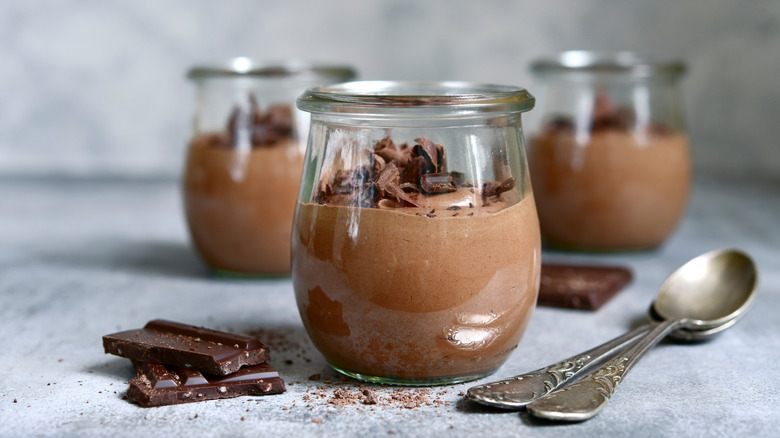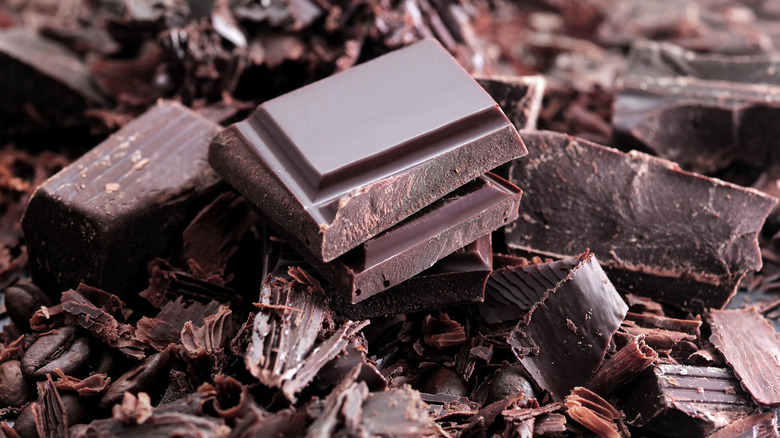The Best — And Worst — Types Of Chocolate To Use In Your Mousse
Well everyone, it's happened again: Your mom was right. Dark chocolate really is superior to milk chocolate — at least when it comes to making a rich and sophisticated chocolate mousse. Two pastry chef experts corroborated the information for us, explaining that while you can technically make a mousse with any type of chocolate, finding one with a cacao percentage of 60-70% is best for the dessert (meaning one with a little less sugar than your inner child might reach for). This choice will stop your dessert from being too sweet. If there even is such a thing.
Mousse is an airy cream, similar to pudding but less dense, made by whipping egg whites or heavy cream with other flavoring ingredients and chilling the mixture until it makes a smooth, light dessert. It's often made with chocolate, but you can also make fruit mousses like this passion fruit mango mousse recipe.
If you're going the classic route, though, the executive pastry chef at Pastis Miami, Meghan Brophy, explained that the choice to use dark chocolate isn't just about the flavor — there are textural concerns with using milk or white chocolate as well. "I would suggest [...] avoiding chocolates that are made with large amounts of sugar and emulsifiers, as this will greatly affect the end result," she says. "Also take into consideration that varieties of milk and white chocolate will not set the same way." Chef Muhammed Ince, the executive pastry chef at Fontainebleau Miami Beach, echoed these sentiments as well as urging bakers to stay away from using chocolate chips in their mousse, sticking with baking chocolate instead.
More expert advice for chocolate selection
A chocolate's cocoa percentage indicates how much of the chocolate is made up of cocoa nibs and cocoa butter, with the remaining amount mostly made up of sugar, as compared to milk chocolate which contains both added sugar and milk. In order to legally be considered "dark" chocolate, a bar must contain at least 43% cocoa solids, but 60%-70% cacao percentage is the sweet spot for making mousse, according to the experts.
But high cocoa content on its own doesn't necessarily make a chocolate good – the beans used to make your chocolate and the way in which they're processed will determine its flavor, much like in coffee. Chef Muhammed Ince recommended brands like Valrhona, Callebaut, and Weiss, and Chef Meghan Brophy seconded the Valrhona shoutout. "Valrhona [has] a wide variety of options to achieve many different flavor profiles," Brophy notes.
As for why other varieties of chocolate don't work as well? Mousse is a very delicate dish, and Ince says that chocolate chips often contain stabilizers like soy lecithin that don't melt smoothly, changing the texture of your mousse. Beyond that, milk chocolate can overpower the already rich dessert with sweetness, rather than allowing it to have the more subtle, classy flavor dark chocolate brings to the table. At the end of the day, the chocolate you use isn't the only important factor in making a perfect mousse — even more importantly, patience is the key to mousse mastery.

